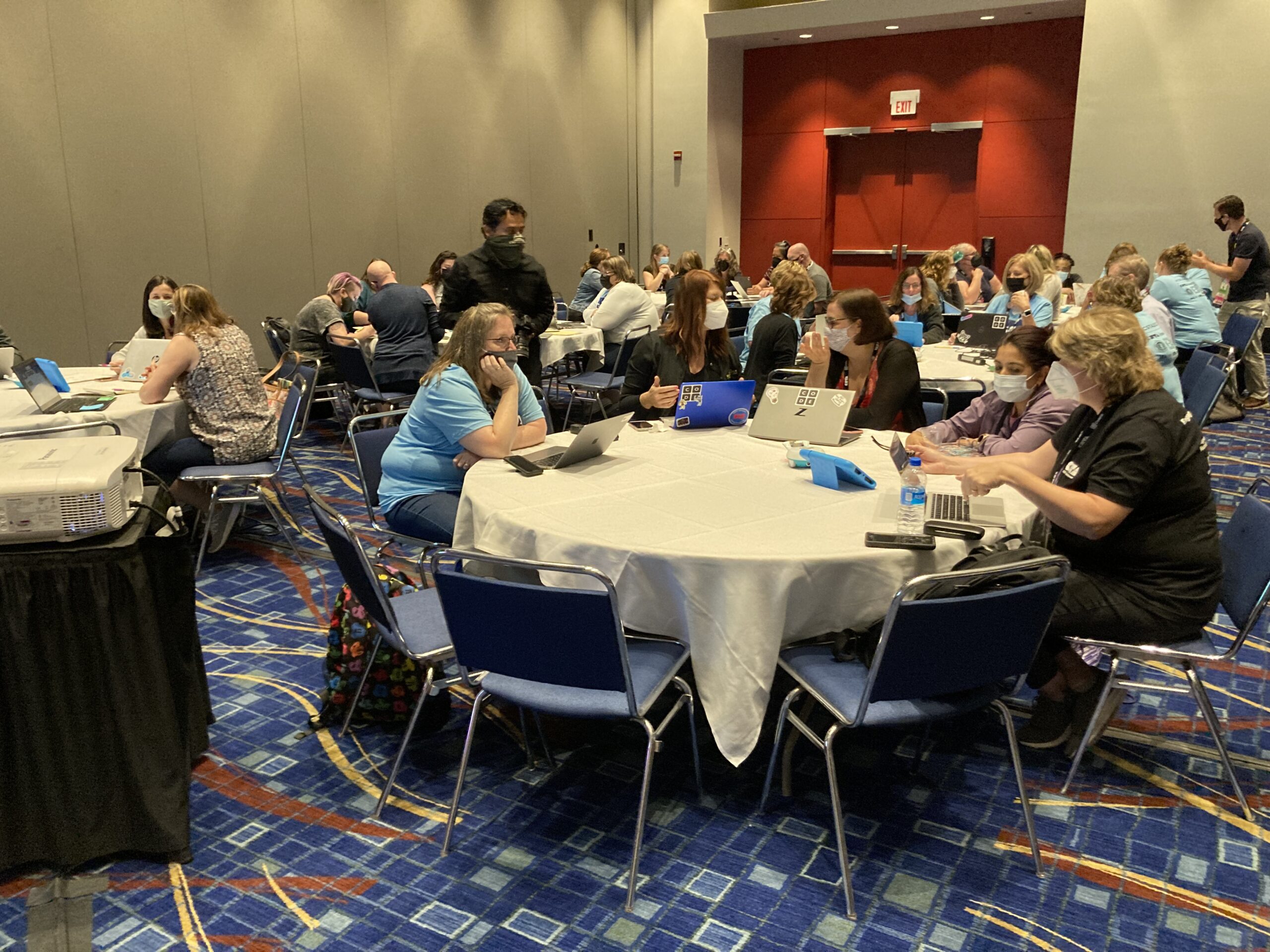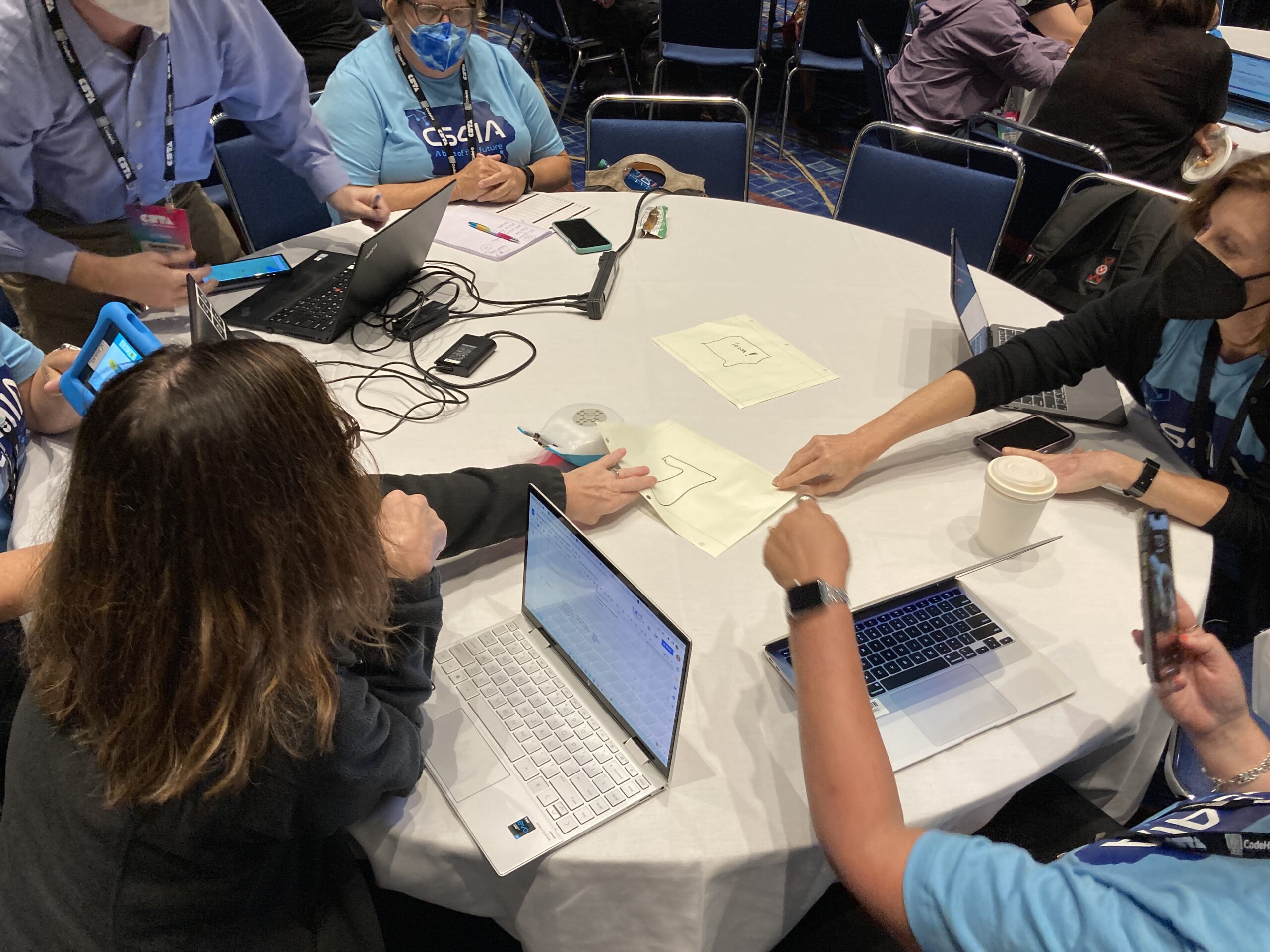We had an absolute blast at the Computer Science Teachers’ Association national conference in Chicago last week. It was wonderful to connect with so many beloved users, to meet new and friendly faces, and to share the Finch Robot and Hummingbird Robotics Kit with amazing computer science educators from all over the United States! If you’ve been following along on Twitter, you know that we were lucky enough to offer two different sessions for CSTA this year: a poster session, and a hands-on workshop. Read on to learn about these two sessions: Social Emotional Learning with Robotics, and CS Everywhere: STEM Outside of the Lab and All Over the School.
Social Emotional Learning with Robotics

Our poster session was all about Social Emotional Learning with Robotics, and the powerful ways that incorporating robots and physical computing can help students to connect with the five core skills in CASEL’s 5 SEL framework in the classroom. We chatted with so many educators during the two hour session about the powerful combination of technology and SEL, and activities to engage students in grades K-12. If you’d like to learn more, you can catch much of the same information in the webinar video featured in this blog post.



CS Everywhere: STEM Outside of the Lab and All Over the School
(Open slide deck in a new window)
Our workshop session was a partnership with master teacher Carmen Loughner, from the Franklin Regional School District in Murrysville, Pennsylvania. Carmen has been teaching for more than 20 years, and she has created a thriving culture of computer science and robotics within the Franklin Regional School District. In CS Everywhere: STEM Outside of the Lab and All Over the School, Carmen shared her time-tested tips and tricks for creating a school ecosystem that integrates technology into every subject. Speaking to a packed ballroom of approximately 80 computer science educators, Carmen and Sarah, BirdBrain’s Learning and Community Manager, focused on two main barriers to pushing robotics outside of the technology lab and into classrooms: building strong, meaningful relationships with teachers, and incorporating robotics into academic content in a way that benefits both teachers and students.

After introductions and a turn and talk icebreaker, the group considered the different experiences that classroom and core academic teachers may have had with technology integration, and the way that these expeirences might impact their attitudes towards new initiatives and programs. What can computer science teachers and technology integration specialists do to support teachers all across the range of comfort with technology? The discussion included considering the rewards and challenges of building relationships with each of the five types of technology adapters: innovators, early adopters, the early majority, the late majority, and laggards. Using a Google Jamboard, the full group of participants were simultaneously able to add their thoughts for a unique and lively discussion. Here’s an example:

After hearing real-life examples and advice from Carmen, the group moved on to the second barrier: academic integration. As computer science and technology teachers, how can we help to integrate technology into academic content in a way that is worthwhile and meaningful for both teachers and students? This is key in meeting standards, building positive relationships, and helping teachers to develop the confidence and passion to continue integrating technology past just one project.
To get inspired, each participant looked through a collection of robotic academic integration examples from the BirdBrain Technologies website and social media feed. Once they were feeling inspired, educators broke into groups to work hands-on with the Finch Robot. Each group was randomly assigned a well-known academic subject like branches of government, geometry, or the human body. They then worked together to brainstorm an activity integrating the Finch Robot into the teaching or assessment of that subject. It was magical to hear the sounds of collaboration and excitement throughout the room as these educators worked.



The full slidedeck for CS Everywhere: STEM Outside of the Lab and All Over the School is available online, for free. You do not need to be a CSTA member to view. Take a look now, and enjoy all of the free resources included in the slideshow!
Thank you for having us, Computer Science Teachers’ Association! We had a great time and can’t wait to see you next year.
